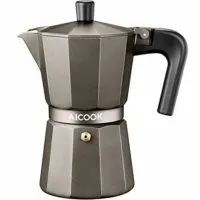Add a little buzz to your next batch of macarons with this Cuban coffee macaron recipe (espresso macarons)! Filled with silky espresso buttercream, these macarons are a sure pick-me-up treat.
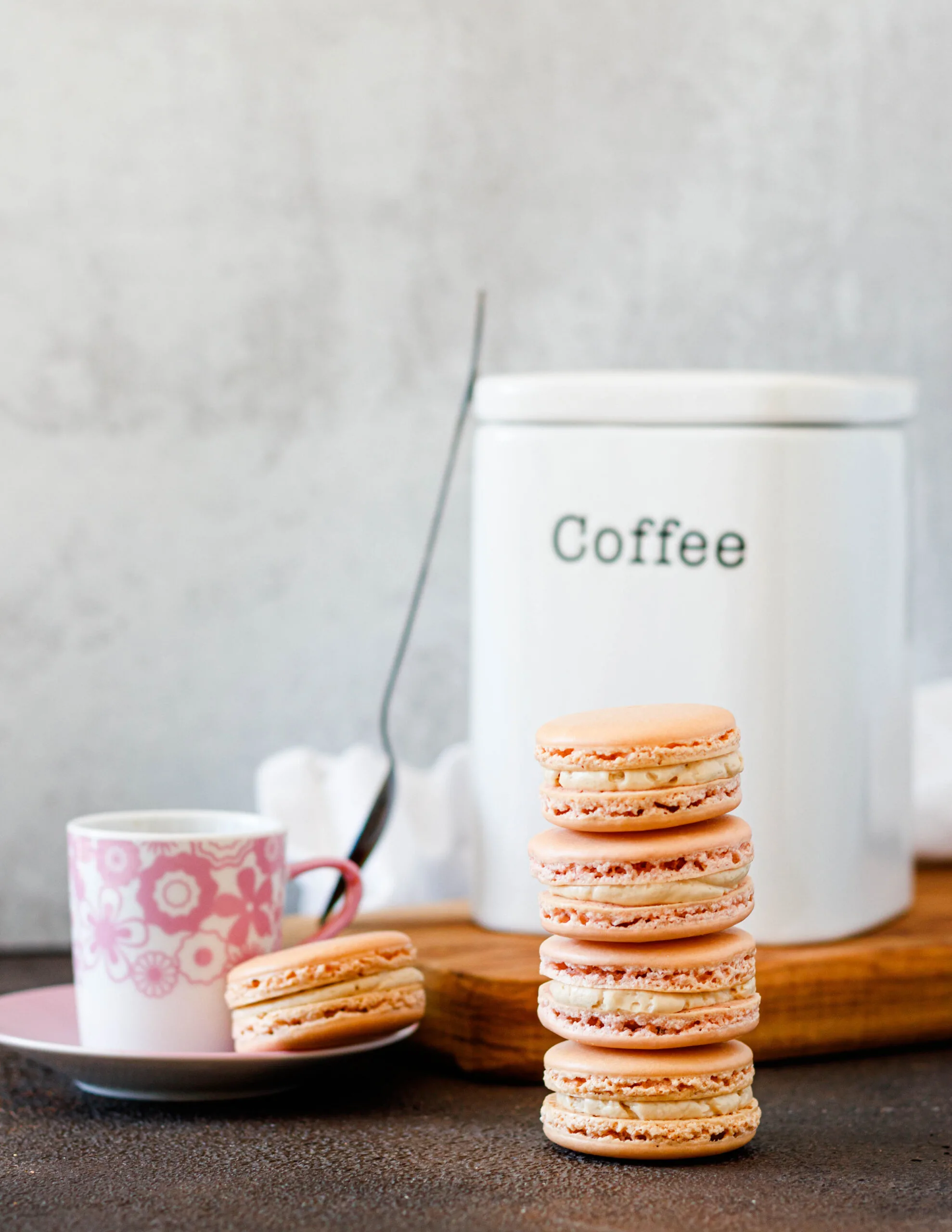
Darlings, the oven in this new place and I are still making friends when it comes to macarons. The good part? I’m making more macarons now to find the “sweet spot” in this kitchen. The bad part? I probably wouldn’t have to do nearly as much test baking if I would just buy another oven thermometer.
*Heads to Amazon, clicks “purchase” on the thermometer that’s been sitting in my cart for months now.*
That did actually just happen. I don’t know why it took so long, especially since an oven thermometer is one of the best little tools to have on hand if you move frequently as we do. And it probably only happened because I’m putting all my ridiculousness out on the internet. So thanks for the encouragement!
Rental ovens all run a little differently, and with recipes like macarons, you need to know the actual temperature in your oven.
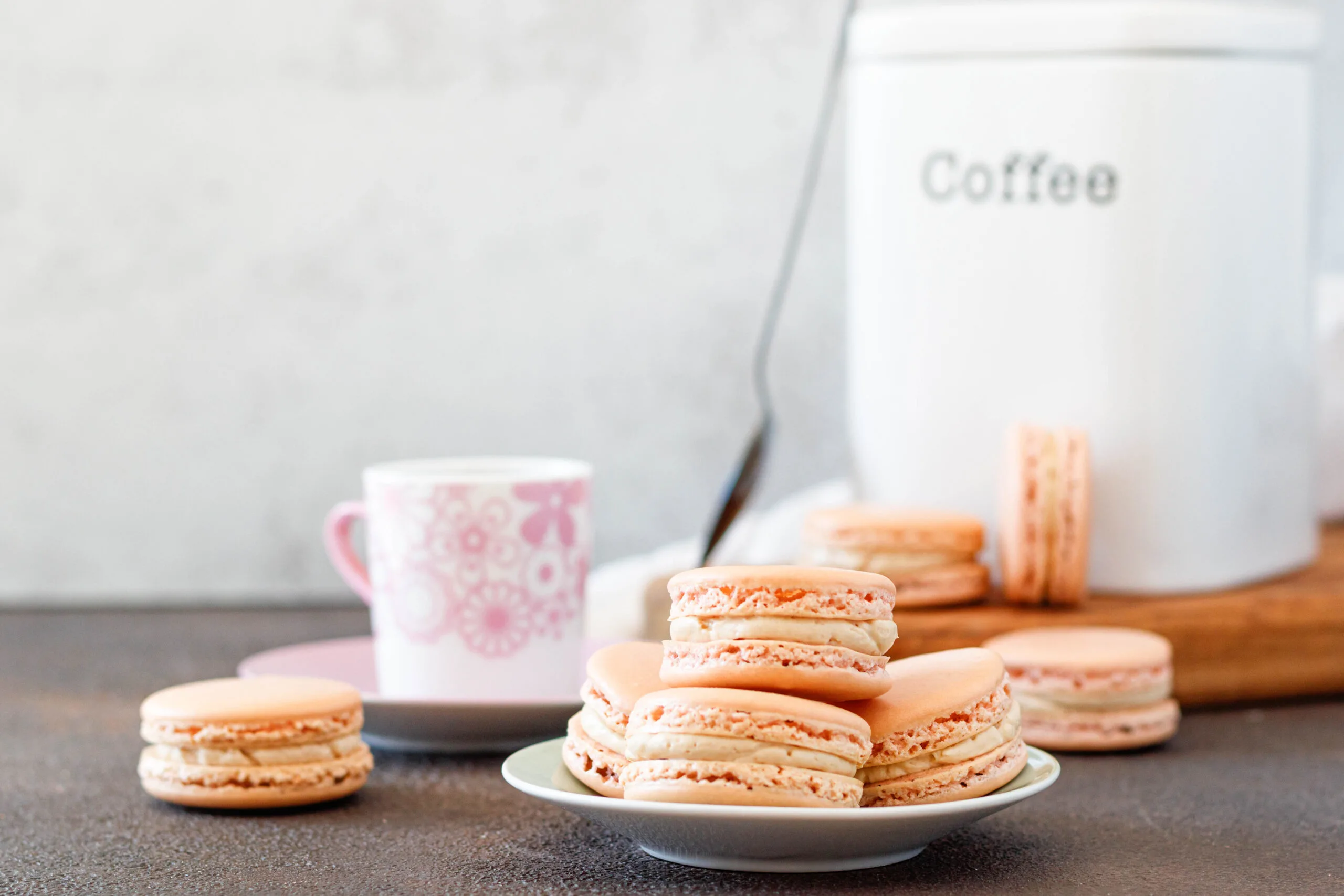
Anyway, back to this Cuban coffee macarons recipe.
There’s not really a fun backstory for the inspiration other than we drink a lot of Cuban coffee.
If you’re unfamiliar, Cuban coffee is basically sweetened espresso. When you make it just right, a little crema appears on top, the bitter coffee and sugar are in perfect balance, and you’re ready to pause for a few minutes and enjoy.
To make these macarons, I take a little coffee, mix it in with the tiniest batch of my Swiss meringue buttercream, and that’s it!
Tips for making Cuban Coffee Macarons (espresso macarons)
Of course, there are a few tips for making macarons that I’d like to share with you.
First, if you haven’t made macarons ever before, don’t stress! Even if they don’t turn out perfect, they’ll still be delicious. You can find more detailed tips in my “how to make macarons” post here.
Second, stick to gel or powdered food coloring to add color to your shells. Liquid coloring will throw off the ratios and may increase your risk for shells that crack or don’t form feet.
Third, you don’t technically have to use prepared espresso for the filling.
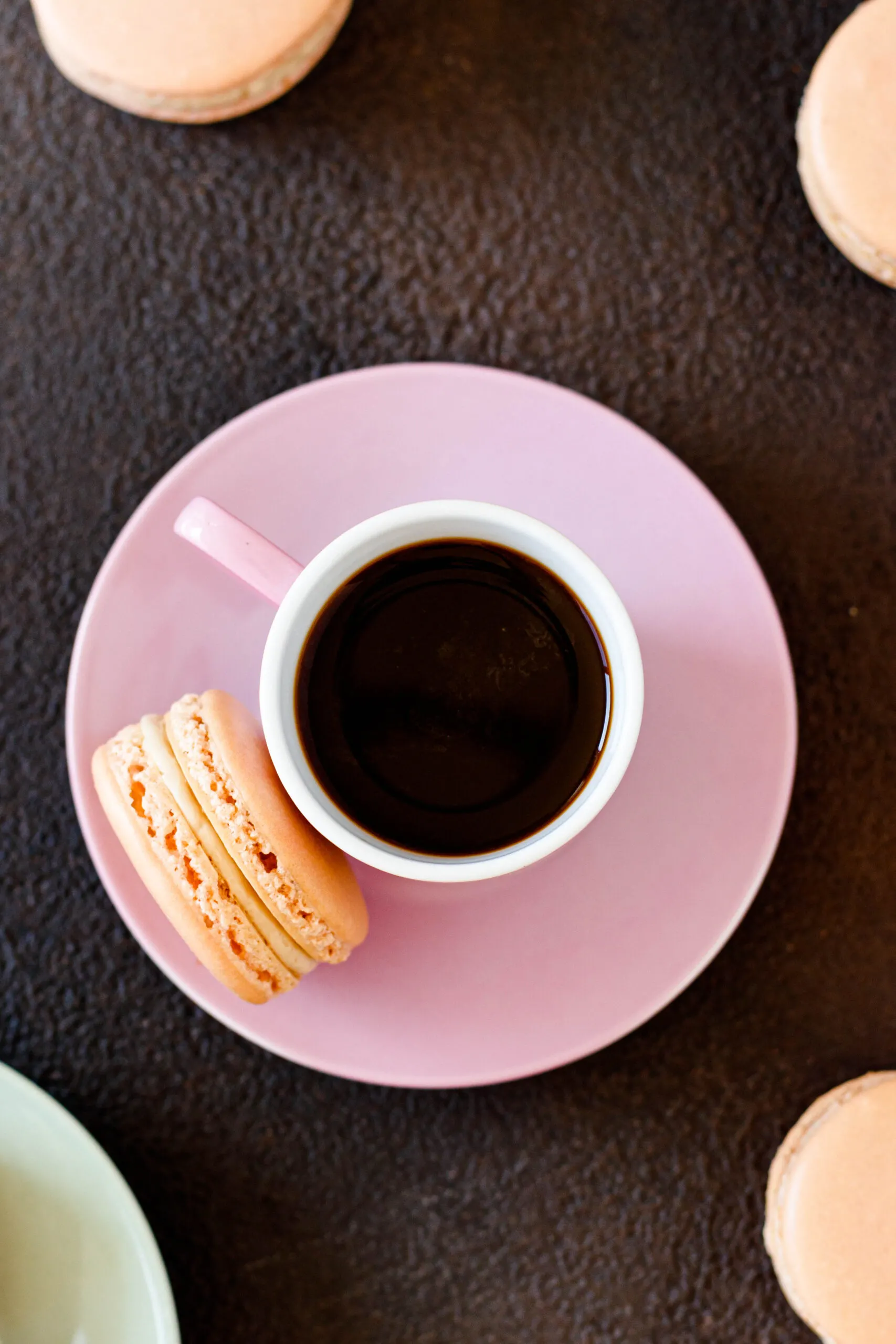
The recipe was created using a shot of prepared Cuban coffee. When I’m making coffee for macarons, I will only add the tiniest bit of sugar (if I’m making for us to drink too) or just stick to straight espresso.
If you don’t have an espresso maker, don’t drink espresso, or just don’t feel like making coffee… you don’t have to. In a pinch, I use powdered espresso and it works quite well. The flavor is a little different, and you do need to dissolve the crystals to avoid weird spots in your filling. But it is a great little trick in a pinch, and doesn’t require heading to your local coffee shop to buy espresso for a recipe.
Which recipe method do I use for macaron shells?
There are two methods I use interchangeably for making macarons – the French and Italian methods. Either works equally well. The difference has to do in the preparation method.
The Italian macaron method uses a sugar syrup cooked to a soft ball stage, then whipped. The French method doesn’t require cooking a syrup and you mix the granulated sugar into the egg whites slowly to create your meringue base before folding in the almond flour mixture.

Today I’m using the Italian method. I flip between the two methods. Use whichever feels right to you!
How do I store macarons?
Prepared and filled macarons can be wrapped in an airtight container and stored in the refrigerator for a week, or frozen for a month or two. Remove from the refrigerator 5-10 minutes before you plan to enjoy so the filling has a little time to soften.
I hope you love this espresso macaron recipe, darlings.
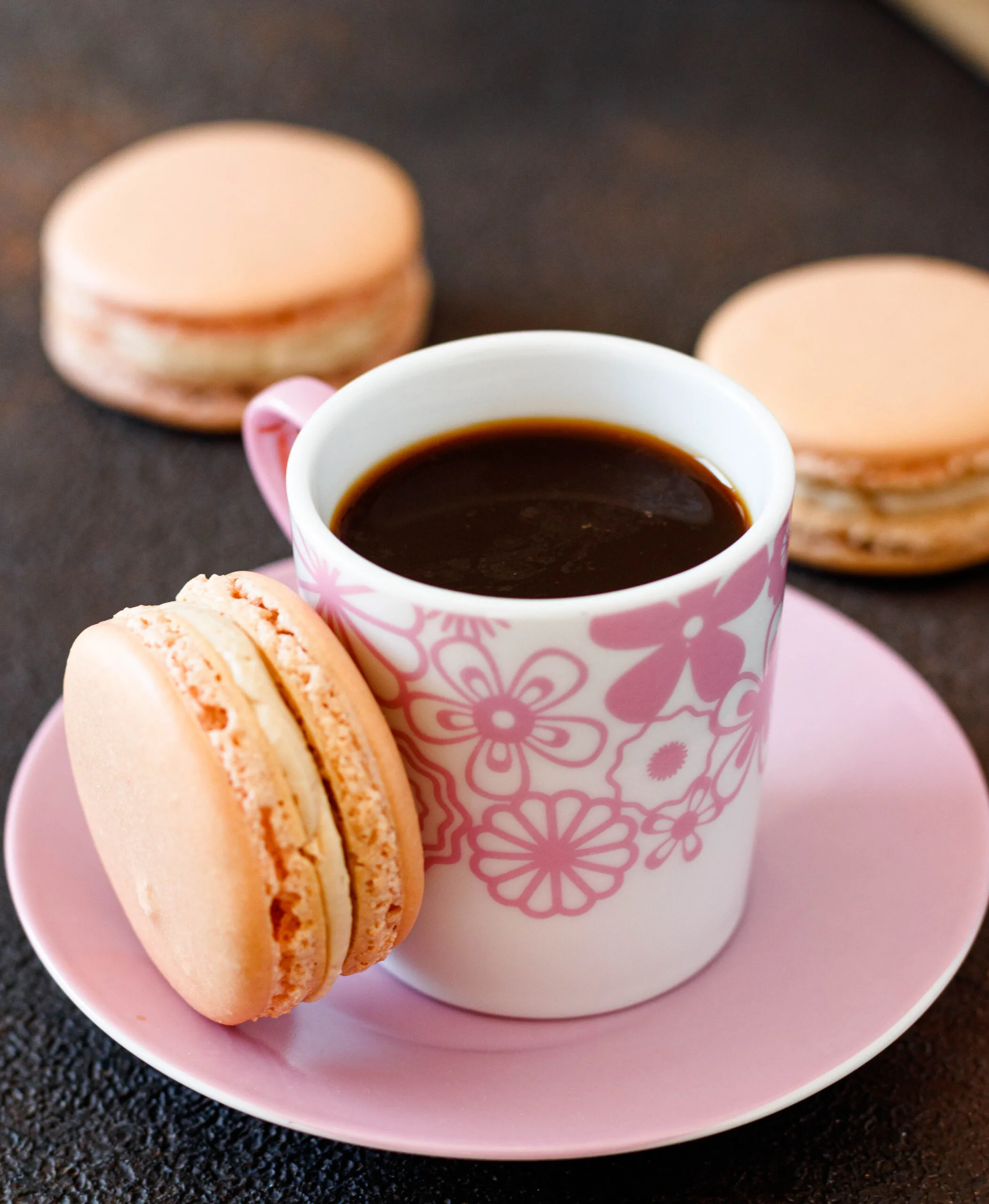
Happy baking!
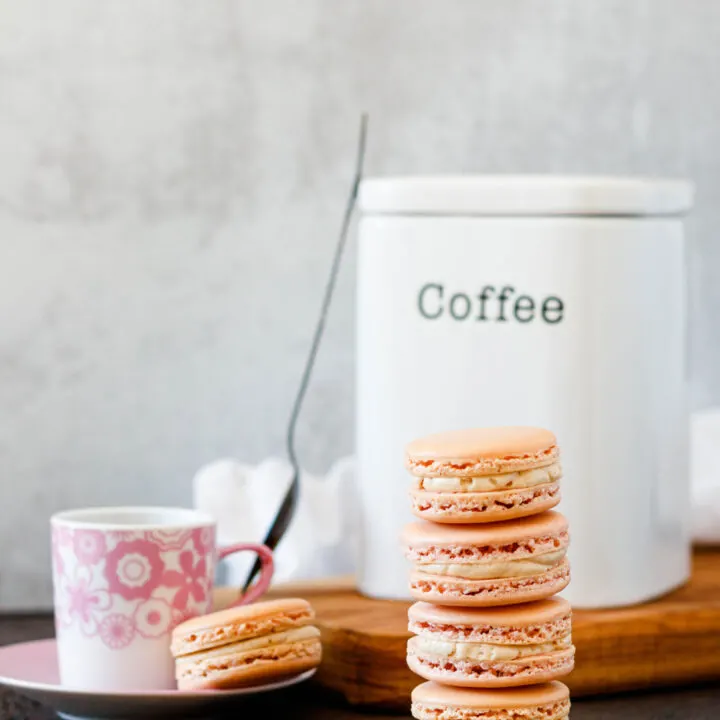
Cuban Coffee Macarons
Add a little buzz to your next batch of macarons with this Cuban coffee macaron recipe (espresso macarons)! Filled with silky espresso buttercream, these macarons are a sure pick-me-up treat.
Ingredients
Macaron Shells:
- 110 grams egg whites, divided
- 150 grams granulated sugar
- 30 grams water
- 150 grams blanched almond flour
- 150 grams powdered sugar
- gel food coloring
Cuban Coffee (Espresso) Filling:
- 1/4 cup sugar
- 1 egg white
- 7 tablespoons butter, softened
- 2 tablespoons espresso
Instructions
Make the Macaron Shells:
- Layer the confectioners sugar and almond meal in a small food processor. Add half the powdered sugar first, all the almond meal, then the remaining powdered sugar. Pulse 4-5 times until the sugar and almond meal have combined. Transfer to a medium bowl. Top with 55 g egg whites. Do not mix.
- In the bowl of your stand mixer fitted with your whisk attachment, place the other 55g egg whites.
- In a small saucepan, combine the granulated sugar and water over medium heat, stirring constantly until the sugar dissolves. Bring the mixture up to soft ball stage (235 F/112 C) over medium-high heat.
- When the sugar mixture is about 10 degrees away from the soft ball stage, start whisking your egg whites on medium speed until frothy.
- Once the sugar has reached the soft ball stage, immediately remove from the heat, increase your mixer speed to high, and carefully drizzle in the sugar syrup, avoiding the sides of your bowl as much as possible. Continue whisking until you've reached a soft peak. Add a drop or two of food coloring here, if using.
- Dump in 1/3 of the almond mixture and stir in. Repeat 2 more times. Fold the almond mixture into the egg whites using a "J" motion and rotating the bowl to ensure even mixing. Keep going until the mixture is homogeneous and looks like slow-moving lava. Be careful not to over mix.
- Place the mixture into a piping bag fitted with a round tip and pipe onto parchment paper or silicone mat lined baking sheets. Set aside to dry for at least 20 minutes.
- Heat your oven to 315 F.
- Bake the sheets one at a time for 15 minutes until the shells easily lift off the parchment or baking mat but aren't colored around the edges. Remove from the oven and allow to cool completely before filling.
Make the Espresso Swiss Meringue Filling:
- Place the sugar and egg white in the clean bowl of a stand mixer or a heatproof mixing bowl.
- Fit your stand mixer with the whisk attachment or have your hand mixer ready.
- Place some water in a saucepan, making sure that the water level isn't high enough to touch the bottom of your bowl. Bring the water to a simmer, then place the mixing bowl on top of the saucepan. Stir constantly until the sugar has completely dissolved, about 4-5 minutes.
- Once the sugar has dissolved, remove the top bowl from the heat immediately and start the mixer on low, working up to high speed. Keep going until the egg white/sugar mixture turns white. Be patient, this takes about 5 or so minutes.
- Add the butter 1 tbsp at a time, whisking continuously at high speed. If the mixture looks soupy, the egg whites were still too warm. Chill for 10-15 minutes and then whip again, or just let the mixer run another 5-10 minutes. If at some point the mixture starts to look curdled, don't worry about it, just keep mixing and it will become smooth in a minute or two.
- Once the frosting looks silky, add the espresso and whisk to incorporate.
- Place the filling into a piping bag fitted with a round tip and pipe onto a cooled macaron shell. Top with another shell. Repeat until you've filled all your macarons!
- Allow the macarons to rest in the refrigerator in an airtight container overnight. Then enjoy!
Recommended Products
As an Amazon Associate and member of other affiliate programs, I earn from qualifying purchases.


